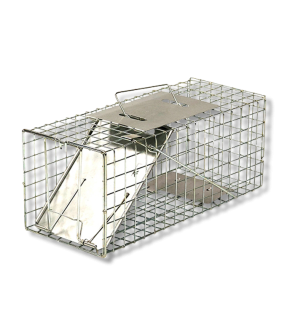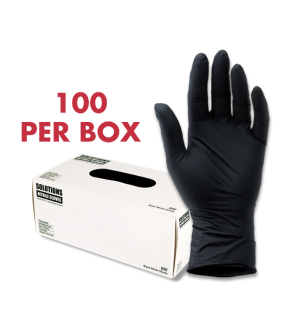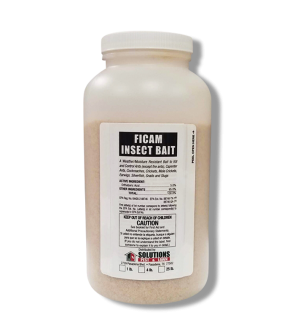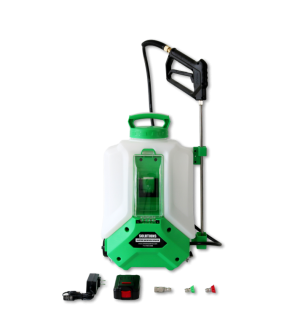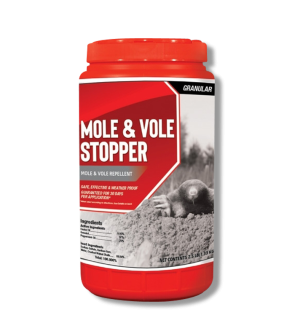Gain access to personalized product screening, the best pricing, rewards, and more!
Most Effective Products
Shrew Control: How to Get Rid of Shrews
This DIY guide contains information and suggestions to help decrease the appearance of shrews on your property. Follow this guide and use the recommended products, and we guarantee 100% control of shrews. When following these guidelines, State and local laws are still present and must be followed. It would be best for homeowners to visit their local animal control office or state website to visit proper rules and regulations associated with the control of shrews.
Although shrews are commonly mistaken for mice, they are insectivores, not rodents. They feed on various insect and garden pests, such as caterpillars, spiders, earthworms, centipedes, slugs, sowbugs, pillbugs, and snails throughout the year since they are non-hibernating pests. They may also feed on pests smaller than them, like mice, snakes, and birds. While this may sound beneficial, the shrew has a vigorous appetite and must eat every 2 to 3 hours to keep up with its metabolic rate.
To satisfy their large hunger, the shrew digs a small hole in the pathways and tunnels already created by the American shrew mole, mole, voles, and sometimes mice. Most species of shrews are extremely territorial, meaning that one pest is often invading your property. Regardless of their low population rate, it only takes one pest to damage your turf and plants significantly. The shrew also possesses toxic saliva to help paralyze small insects and animals, which may cause irritation to a homeowner's skin or lead to a serious infection if bitten.
Shrews are solitary pests that are aggressive by nature and may harm homeowners if contacted. Though outdoor pests, shrews sometimes invade homes creating structural damage from their gnawing activity to foul-smelling secretions. Our DIY shrew treatment guide below contains helpful information and product recommendations for complete shrew elimination from your yard.
Identification

Before proceeding with treatment, you will need to make sure that the pest infesting your yard is a shrew. Careless identification can lead you to use the wrong treatment approach, which may be ineffective and waste time and finances. Below you can find the list of identifying characteristics that shrews have:
- Small in size, measuring between 3 to 5 inches in length. Bodies are slender yet plush-like in appearance.
- Typically shrews are grey or brownish in fur coloration with a white underside across their stomach and against the side of their legs and paws.
- Compared to rodents, shrews have a longer and narrow head. They also do not possess a pair of incisor teeth like rodents but pointed teeth for chewing their prey. The ears of shrews are relatively small to the point of being non-evident than that of mice.
- Five clawed toes on their paws for light digging. Paws and feet are smaller and more narrow than moles and closely resemble that of mice. The exception is that mice have four toes while shrews have five. Shrews can move very quickly across various terrains and surfaces.
- Like moles, shrews have very small black eyes, long movable snouts, and small ears. In contrast to moles, the teeth of shrews are more pointed for hunting insects and small mice, snakes, and other shrews.
Use the image and description above to confirm that you are dealing with a shrew on your property. If unsure, contact us by phone, email, or in person at one of our store locations with a photo of the pest or its damage.
Inspection
Once you have confirmed that you are facing a shrew infestation, you can proceed with the inspection. During this phase, you will determine where the shrew is most active and the conditions allowing the pest to thrive. This will help you determine where to focus your treatment applications without wasting product material and time.
Where to Inspect
Shrews are mainly outdoor pests but will invade homes if there are little food sources or cooler weather. This pest prefers to live underground beneath bushes, trees, hedgerows, bushy or wooded areas, gardens, and in abandoned burrows from small rodents, moles, and voles. Inside homes, the shrew will dig holes in the basement of houses and in between the gaps in your home's foundation.
What to Look For
Shrews are active throughout the year during the day and night to consume enough food for its fast metabolism. They are not tunneling pests, meaning they will dig various small holes throughout pathways already created by mice, voles, and moles. The paths appear as tunnels in the grass. These holes can be found above ground and underground, measuring 1 inch in diameter.
These pests do not feed on plant roots but can damage desired flowers, shrubs, turf, and tree roots as they dig for insects.
Inside homes, be aware of pungent secretion odors that are almost as strong as a skunk. A shrew droppings are small, dark brown to black colored with a corkscrew shape. Shrews will also gnaw on electrical wiring and corners of wood surfaces to mark their territory. If cornered or afraid, then shrews can make themselves present by attacking you or sometimes your pets. They mostly come inside homes with birds and pets, as seeds and other pet food are available. Shrews may also feed and attack caged birds.
Treatment
Once you have confirmed shrew activity, you can proceed with treatment. Before beginning any pesticide application, you will need to wear the appropriate personal protective equipment (PPE) to protect yourself against diseases, infections, and contact with shrews and chemicals.
Though shrews prefer to live alone, they will tolerate other members of their species during the breeding season from May to September. For total shrew control, we recommend removing food sources and trapping at the beginning of April to limit shrew activity and populations.
Step 1: Eliminate Food Sources

Shrews mainly feed on soil-dwelling insects like worms, centipedes, millipedes beetle larvae, snails, slugs, sowbugs, and sometimes even spiders, snakes, small mice, or frogs.
We recommend Supreme IT for general insecticide treatments in your yard. Supreme IT is a bifenthrin-based insecticide concentrate that eliminates 70 pests and repels them from treated sites for 90 days after application.
It will need to be mixed with water in a handheld pump sprayer, backpack sprayer, or hose-end sprayer.
Determine how much product to use by measuring the square footage of the treatment area. Find the square footage by measuring the treatment area's length and width in feet, then multiplying them together (length X width = square footage).
A general pest control treatment with Supreme IT will use 1 fl. oz. of product with 1 gallon of water to treat 1,000 sq. ft.
Spray your turf and ornamentals thoroughly. You will need to treat the top and bottom of leaves to the point of wet, but not runoff.
Treating an active snail or slug infestation:
If you are facing snail or slug iactivity, we recommend using Ficam Insect Bait.
Ficam Insect Bait is an orthoboric acid-based granular insecticide bait that will control various crawling insects, especially in and around structures.
To cover large treatment areas it would be best to use a handheld or push spreader. For cracks and crevices, a duster could be used.
To get rid of snails and slugs in lawns, use 2 pounds of Ficam Insect Bait per 1,000 sq. ft. You can also apply 3.2 ounces or 2/3 cup of product per 100 square feet.
Evenly distribute granules on the treatment area.
If you believe you are facing a mouse infestation, it would be best to refer to our rodent control guide to learn which rodent it is to better control and prevent it.
By eliminating the insect population in your yard, you remove the main food source that draws shrews in.
Step 2: Set Traps
Once you’ve taken steps to get rid of the insects and grubs shrews love to eat, setting traps is a smart next move and here’s why.
Even after their main food source is gone, some shrews might stick around, especially if they’ve already made themselves comfortable in your yard or near your home. Trapping gives you a way to deal with those stubborn stragglers who aren’t in a rush to leave. Think of it as cleaning up what’s left after you’ve already made the place less inviting. It’s one thing to stop attracting new shrews, but it’s another to make sure the ones already there are gone for good. Traps let you do both.
To address shrews effectively, we recommend using the small size of the Solutions Humane Live Animal Trap.
The Solutions Humane Live Animal Trap is a safe, non-lethal way to deal with these small animals without causing them harm. Additionally, these traps are easy to use and effective, with sensitive triggers that ensure the trap captures even the smallest animals like shrews.
Place the trap along common shrew pathways such as walls, edges of buildings, or near burrows. Shrews tend to stick to well-defined paths, so positioning the trap along these routes increases your chances of success.
Be sure to place the trap on an even surface.
Once the treatment area is determined, you can set your Solutions Humane Live trap. With a gloved hand, push on the door lock and lift the door plate. Keep the door plate lifted while pulling the trigger arm forward to set it. The Solutions Humane Live Trap is set when the trigger arm hook catches the door.
Once set, carefully place bait high in aromas, such as peanut butter with seeds and small pieces of apples or carrots, behind the trigger plate.
This placement will encourage the shrew to step on the trigger plate and close the Solutions Humane Live Trap.
Trapped shrews can bite, so it may be best to contact your local animal control office for the relocation and removal of the pest.
Step 3: Apply Mole & Vole Stopper Granular Repellent
Once the food is gone and traps have been set, you will then use a repellent. If any shrews are still lingering or trying to re-enter the area, repellents will help keep them away without harming them.
Mole & Vole Stopper Granular Repellent is a humane granular repellent that stops moles, voles, and shrews from damaging your garden for up to 30 days.
Start by shaking the container well before application. To open, flip the tab on top up.
Shake the container side to side to release the product.
Apply liberally to areas with visible tunnels, mounds, or pest activity. For edible plants, apply a perimeter-only treatment.
The product covers approximately 1,800 sq. ft. per 2.5 lb container.
Reapply every 30 days or after extreme weather for continued protection.
Prevention
Once shrews have been removed from your property, you do not want to experience another infestation. Preventative measures should be put into place to make the conditions of your yard unappealing to shrews. Listed below are some preventative measures to take against shrews:
- Shrews like to invade and dig current holes and grass tunnels created by other burrowing pests. Mow your turf when it has reached 3 inches in height to eliminate these conditions. Refill holes with dirt or rock to block access to previously created tunnels.
- Removing shelter is an essential step in preventing shrews from making your yard or home their home. Shrews seek out areas that provide both protection and food, so clearing away potential hiding spots can make your property far less appealing to them. Start by removing piles of leaves, wood, and debris, which offer perfect cover for shrews. Trim overgrown vegetation and tall grasses, as these areas provide easy hiding places and burrow spots.
- Seal any gaps around the foundation of your home with caulk and copper mesh to prevent shrews from coming inside. Repair electrical damages and moisture issues within homes to lessen the territory mark of shrews.
- Ensuring proper drainage around your yard will also help, as shrews are attracted to moist environments.
- Reapply Supreme IT every quarter throughout the year to limit insect populations for shrews to feed upon.
- Finally, if you notice any active shrew activity, use the Solutions Humane Live Animal Trap to remove any remaining individuals.
Key Takeaways
What Are Shrews?
- Shrews are an abundant and widespread pest throughout the United States that resembles that of a mouse but are more aggressive.
How to Get Rid of Shrews
- Eliminate shrew populations by eliminating their sources of food through applications of Supreme IT, and Ficam Insect Bait. To remove shrews, we recommend using a small Solutions Humane Live Trap. Lastly, apply Mole & Vole Stopper Granular Repellent.
Preventing Shrew Reinfestation
- Prevent future shrew invasions through quarterly applications of Supreme IT, clearing up plant litter, regular mowing, and sealing off-entry points into homes and abandoned tunnels of burrowing pests.












